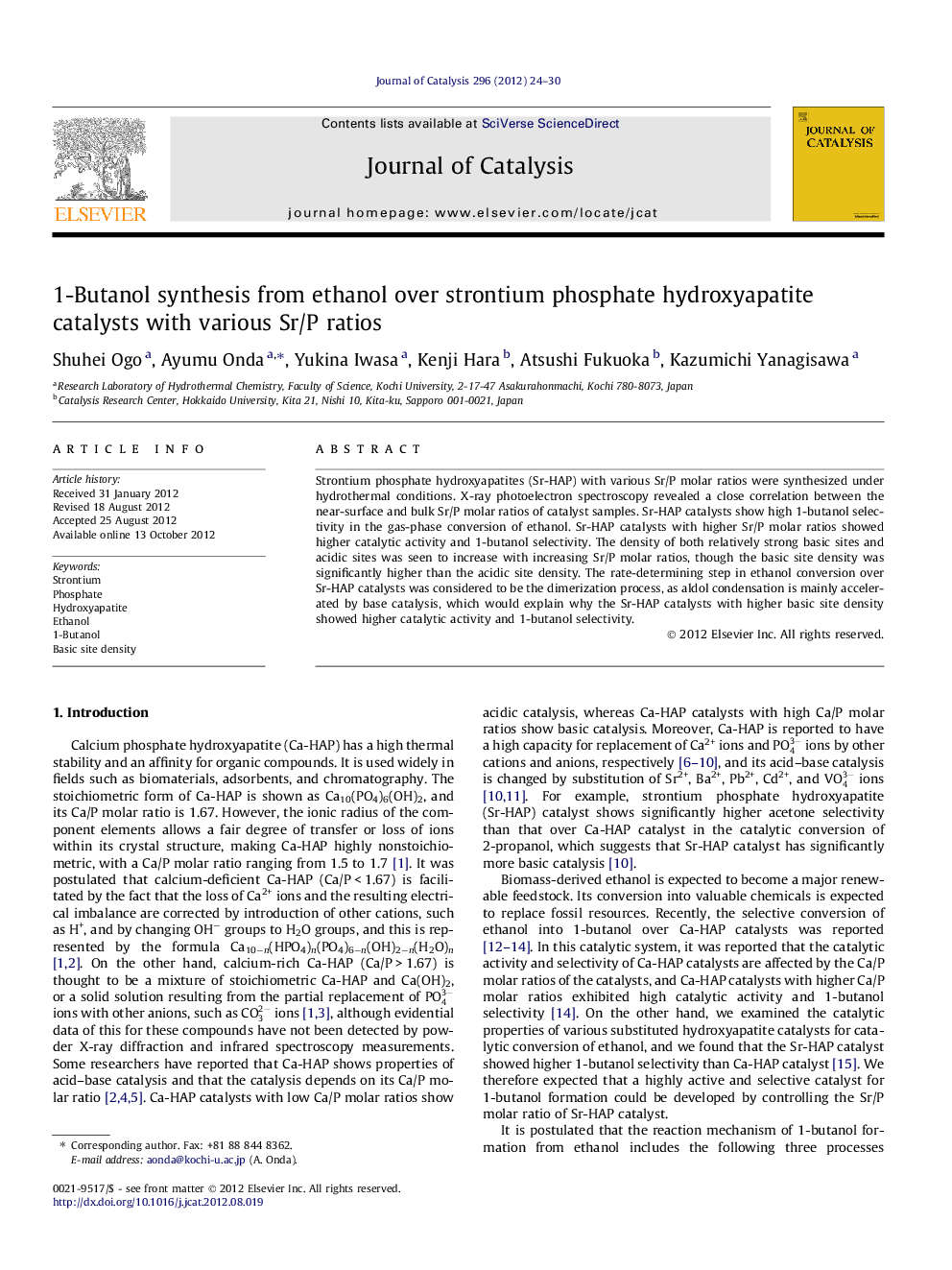| Article ID | Journal | Published Year | Pages | File Type |
|---|---|---|---|---|
| 61328 | Journal of Catalysis | 2012 | 7 Pages |
Strontium phosphate hydroxyapatites (Sr-HAP) with various Sr/P molar ratios were synthesized under hydrothermal conditions. X-ray photoelectron spectroscopy revealed a close correlation between the near-surface and bulk Sr/P molar ratios of catalyst samples. Sr-HAP catalysts show high 1-butanol selectivity in the gas-phase conversion of ethanol. Sr-HAP catalysts with higher Sr/P molar ratios showed higher catalytic activity and 1-butanol selectivity. The density of both relatively strong basic sites and acidic sites was seen to increase with increasing Sr/P molar ratios, though the basic site density was significantly higher than the acidic site density. The rate-determining step in ethanol conversion over Sr-HAP catalysts was considered to be the dimerization process, as aldol condensation is mainly accelerated by base catalysis, which would explain why the Sr-HAP catalysts with higher basic site density showed higher catalytic activity and 1-butanol selectivity.
Graphical abstractStrontium phosphate hydroxyapatite catalysts with various Sr/P molar ratios were hydrothermally synthesized. The catalysts with higher Sr/P molar ratios showed higher catalytic activity and 1-butanol selectivity, which were due to higher basic site density.Figure optionsDownload full-size imageDownload high-quality image (67 K)Download as PowerPoint slideHighlights► Catalysis for selective conversion of ethanol into 1-butanol. ► Strontium phosphate hydroxyapatite as catalyst with high selectivity into 1-butanol. ► Rate-determining step was clarified to be dimerization process. ► Near-surface Sr/P ratios are good correlations with bulk Sr/P ratios. ► Sr/P ratio affects basic site densities, catalytic activity, and 1-butanol selectivity.
